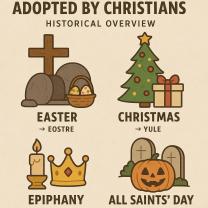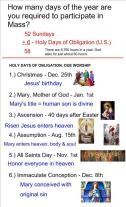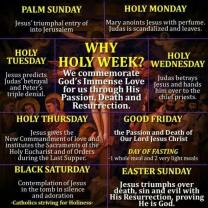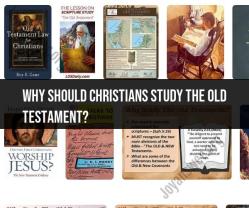What is the summary of the Gospel of Matthew?
The Gospel of Matthew, one of the four Gospels in the New Testament of the Bible, provides a detailed account of the life, teachings, and ministry of Jesus Christ. Here are key takeaways from the summary of the Gospel of Matthew:
1. Genealogy and Birth of Jesus:The Gospel begins with the genealogy of Jesus, tracing His lineage back to Abraham and King David. It then describes the miraculous conception and birth of Jesus in Bethlehem, His visitation by the Magi, and His family's flight to Egypt to escape Herod's massacre.
2. Preparation for Ministry:The Gospel of Matthew introduces John the Baptist, who baptizes Jesus, marking the beginning of His public ministry. This section includes Jesus' temptation in the wilderness.
3. Sermon on the Mount:One of the most famous sections of Matthew, this sermon includes the Beatitudes and teachings on subjects like prayer, fasting, love, and the ethical principles of the kingdom of heaven.
4. Teachings and Parables:The Gospel of Matthew contains a wealth of Jesus' teachings, parables, and miracles. This includes parables like the sower, the wheat and tares, and the good Samaritan, as well as numerous healings and feedings of the multitudes.
5. Conflicts and Opposition:As Jesus' popularity grows, He faces increasing opposition from the religious leaders of His time. This leads to confrontations, controversies, and ultimately His arrest and trial.
6. Passion and Crucifixion:Matthew details the events leading to Jesus' crucifixion, His Last Supper with His disciples, the betrayal by Judas Iscariot, His trial, crucifixion, and death. It also records the supernatural events that occurred at the time of His crucifixion, including darkness and the earthquake.
7. Resurrection and Commission:The Gospel concludes with the resurrection of Jesus from the dead. He appears to His disciples and commissions them to go into all the world, making disciples and baptizing them in the name of the Father, Son, and Holy Spirit—the Great Commission.
8. Emphasis on Fulfillment of Prophecy:Throughout the Gospel, Matthew emphasizes how the life, teachings, and actions of Jesus fulfill Old Testament prophecies, presenting Him as the Messiah.
9. Emphasis on Discipleship:Matthew underscores the importance of discipleship, obedience to Jesus' teachings, and the ethical and moral standards of the kingdom of heaven.
The Gospel of Matthew is a foundational text for Christianity and is highly regarded for its ethical teachings, emphasis on the kingdom of heaven, and the portrayal of Jesus as the long-awaited Messiah. It provides a comprehensive account of Jesus' life and mission, offering guidance for Christian living and the fulfillment of God's promises through Christ.
The Gospel of Matthew: A Summary
The Gospel of Matthew is the first book in the New Testament and one of the four Gospels. It tells the story of the life, death, and resurrection of Jesus Christ. Matthew's Gospel is known for its emphasis on Jesus' fulfillment of Old Testament prophecies and his teachings on the Kingdom of God.
Key Themes and Messages in the Book of Matthew
Some of the key themes and messages in the Book of Matthew include:
- The Kingdom of God: Jesus' ministry was centered on the Kingdom of God. He taught his followers about the Kingdom and how to live a life that is pleasing to God.
- Discipleship: Jesus called his followers to be his disciples. Disciples are people who follow Jesus' teachings and example.
- Righteousness: Jesus taught his followers to live a righteous life. A righteous life is one that is lived in accordance with God's will.
- Forgiveness: Jesus taught his followers to forgive others. Forgiveness is essential for living a righteous life.
- Mission: Jesus commissioned his followers to go and make disciples of all nations. This is the mission of the church today.
Exploring the Structure of the Gospel of Matthew
Matthew's Gospel is structured in a way that highlights Jesus' fulfillment of Old Testament prophecies. For example, Matthew quotes from the Old Testament over 100 times in his Gospel.
Matthew's Gospel can also be divided into five main sections:
- Introduction (1:1-4:11): This section includes Jesus' genealogy, birth, and baptism.
- The Sermon on the Mount (5-7): In this section, Jesus teaches his followers about the Kingdom of God and how to live a righteous life.
- The Ministry of Jesus (8-25): This section includes stories of Jesus' miracles, healings, and teachings.
- The Passion of Jesus (26-27): This section tells the story of Jesus' arrest, trial, crucifixion, and death.
- The Resurrection of Jesus (28): This section tells the story of Jesus' resurrection and his final appearance to his disciples.
Theological Insights from the Book of Matthew
The Book of Matthew offers a number of theological insights, including:
- The nature of God: Matthew's Gospel portrays God as a loving and merciful God. God is also a just God who demands righteousness from his people.
- The identity of Jesus: Matthew's Gospel portrays Jesus as the Messiah, the fulfillment of Old Testament prophecies. Jesus is also the Son of God and the Savior of the world.
- The nature of salvation: Matthew's Gospel teaches that salvation is a gift from God that is received by grace through faith in Jesus Christ.
- The role of the church: Matthew's Gospel teaches that the church is the body of Christ and that it is entrusted with the mission of making disciples of all nations.
Understanding the Gospel of Matthew in Context
Matthew's Gospel was written for a Jewish audience, and it reflects the Jewish context in which it was written. For example, Matthew quotes from the Old Testament extensively and he often portrays Jesus as fulfilling Old Testament prophecies.
However, Matthew's Gospel also has a universal message. Jesus is portrayed as the Savior of the world, and his teachings are relevant to people of all cultures and backgrounds.
Conclusion
The Gospel of Matthew is a rich and complex book that offers a wealth of theological insights. It is a book that can be read and studied over and over again, and each time new insights can be gained.












